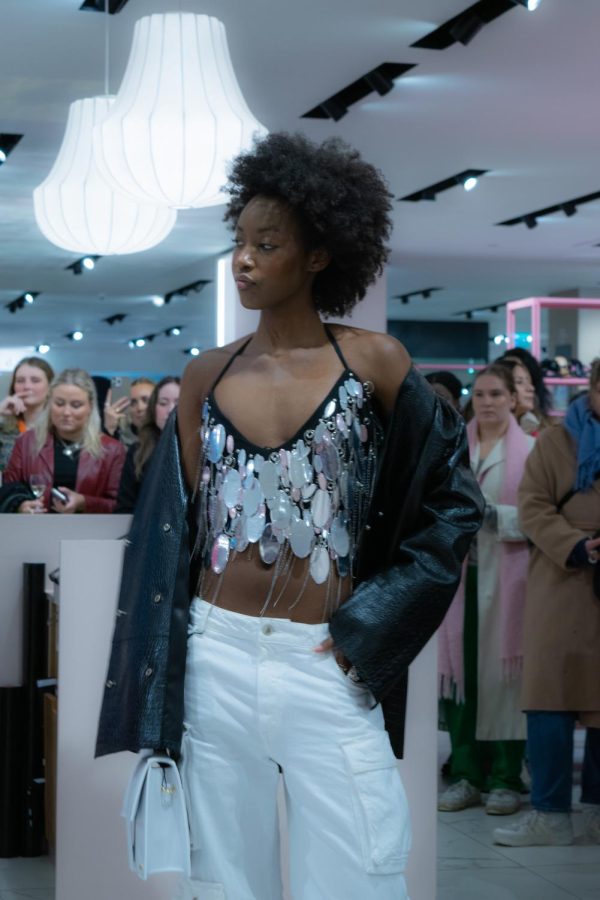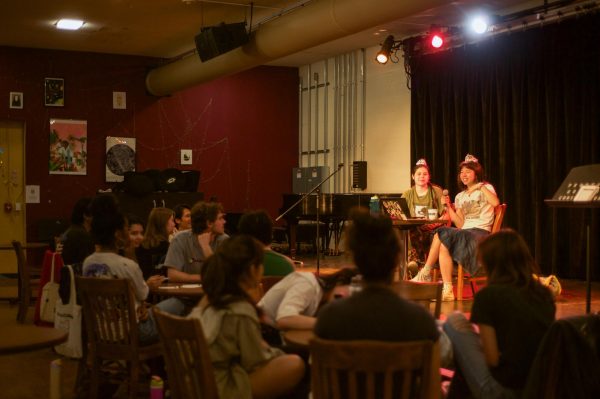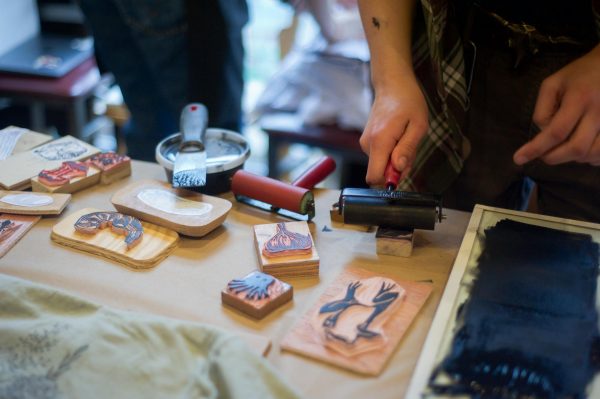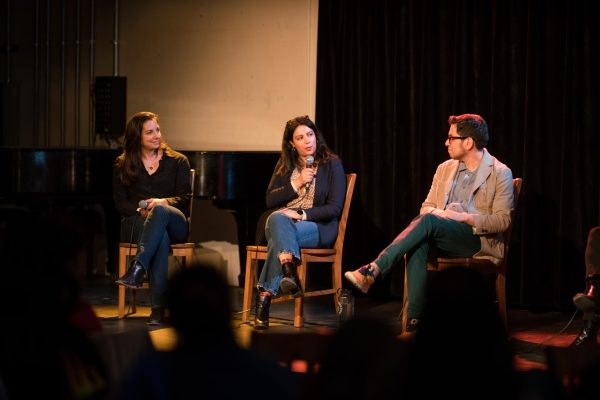Vogue Defines Fashion in Nordic Countries, Inspires Students
Photo courtesy of Haripriya Jalluri
A model makes her way down the runway in a gleaming silver top and poses.
There’s a tendency for students studying abroad to change their wardrobe in order to adapt to their new environment. Crowds of influencers attending international programs will often create a lookbook for everyday clothes. Living in the U.S. I do not often have the opportunity to attend fashion shows — especially not Fashion Week in Europe, where the cultural difference in fashion is made obvious. Since beginning my term abroad in Copenhagen, Fashion Week in Europe has been one of the most exciting things I have experienced so far.
All brands showcased during Copenhagen Fashion Week must meet a set of specific sustainability standards reflecting Danish society’s concern about the climate. Single-use plastics are difficult to find here, hand dryers have replaced most paper towel dispensers, and there’s a bottle-recycling bin on almost every block.
Despite knowing little about fashion, I found myself at a panel hosted by Vogue Scandinavia’s Editor-In-Chief, Martina Bonnier. One of 29 branches, Vogue Scandinavia covers Iceland, Finland, Sweden, Norway and, of course, Denmark. This talk focused on reusable wear and how to style completely different outfits in winter and spring conditions.
As the Danish models came out, it came to my attention how Scandi culture influence their outfits. The patterns and creative designs in jewelry got me thinking about the relationship between fashion and culture at Oberlin, and there’s no doubt that one influences the other. Over the past few semesters, I’ve realized that while fashion doesn’t necessarily define someone, it can tell you a lot about them — not to mention that clothes don’t need to be the centerpiece of an outfit. At Oberlin, many students use fashion to express who they are because the school has built an environment that gives us the confidence to do so. In return, establishments such as the Free Store and Maker’s Market influence student culture to wear things we wouldn’t otherwise. Students can freely showcase their own creations in clothing or jewelry as well.
While some of the attendees at Fashion Week hailed from the Copenhagen area, a good majority came from elsewhere. It’s common for teens all over Europe to travel to see fashion weeks in action. Swedish School of Textiles students Lovisa Hillberg, Jenny Gustafsson, and Märta Huldén were in Copenhagen for the week to watch the shows. When I asked them about the ins-and-outs of 2023 fashion, sustainability was the first thing they said was “in.” For Gen-Z Nordics, wearing secondhand and vintage clothing is a way of protesting waste in fast fashion industries. Vintage shops have become widespread in Denmark and Sweden, and it’s common for people of all ages to shop at them for affordable prices in an expensive country.
Buying second-hand has been a niche interest in many colleges’ resistance against fast fashion, but it’s become more popular among Oberlin students in recent years. In a way, it’s liberating to use garments with it’s own history to go against newer trends, making outfits on campus unique.
Huldén also expressed her eagerness to see a more feminine-presenting approach to fashion regardless of gender.
“[I like] skirts and silhouettes; taking back femininity and not making it a weak point, but more like it’s actually strong to be feminine,” Huldén said.
Afterward, I had the opportunity to sit down and chat with Bonnier. She originally started out as a news journalist, but ended up pursuing her interest in fashion. Bonnier also writes about arts, culture, and design. During our discussion, she talked about her role as Editor-in-Chief of Vogue Scandinavia and about establishing a digital platform as a way to combat the paper consumption of typical magazines.
“Everything is a surprise; we are kind of reinventing a lot of the industry the way we are because we are not just a print magazine,” Bonnier said.
“We are also very much the first [Vogue] to work on all these sustainability things. Not just writing about it, but actually living it and working with it in production and logistic distribution, even in our office. I think that is so important today, and in many ways, we’re the ones that the other Vogues are looking to and asking a lot of questions and so on. I think it’s very typical for this region to be thinking about it. We love sustainability, we love nature, but we are also very tech-savvy.”
Bonnier, who showed up to the panel in a magenta-pink suit detailed with bedazzled gems, also expressed her enthusiasm for Copenhagen Fashion Week.
“I’m excited about everything,” Bonnie said. “I just want to, at the end of everything, see what’s happening, who’s doing more or less or so on. As a fashion journalist, you’re always interested in everything. There’s nothing you look forward to more than others; almost every show, almost everything because it’s so important for us to support.”









